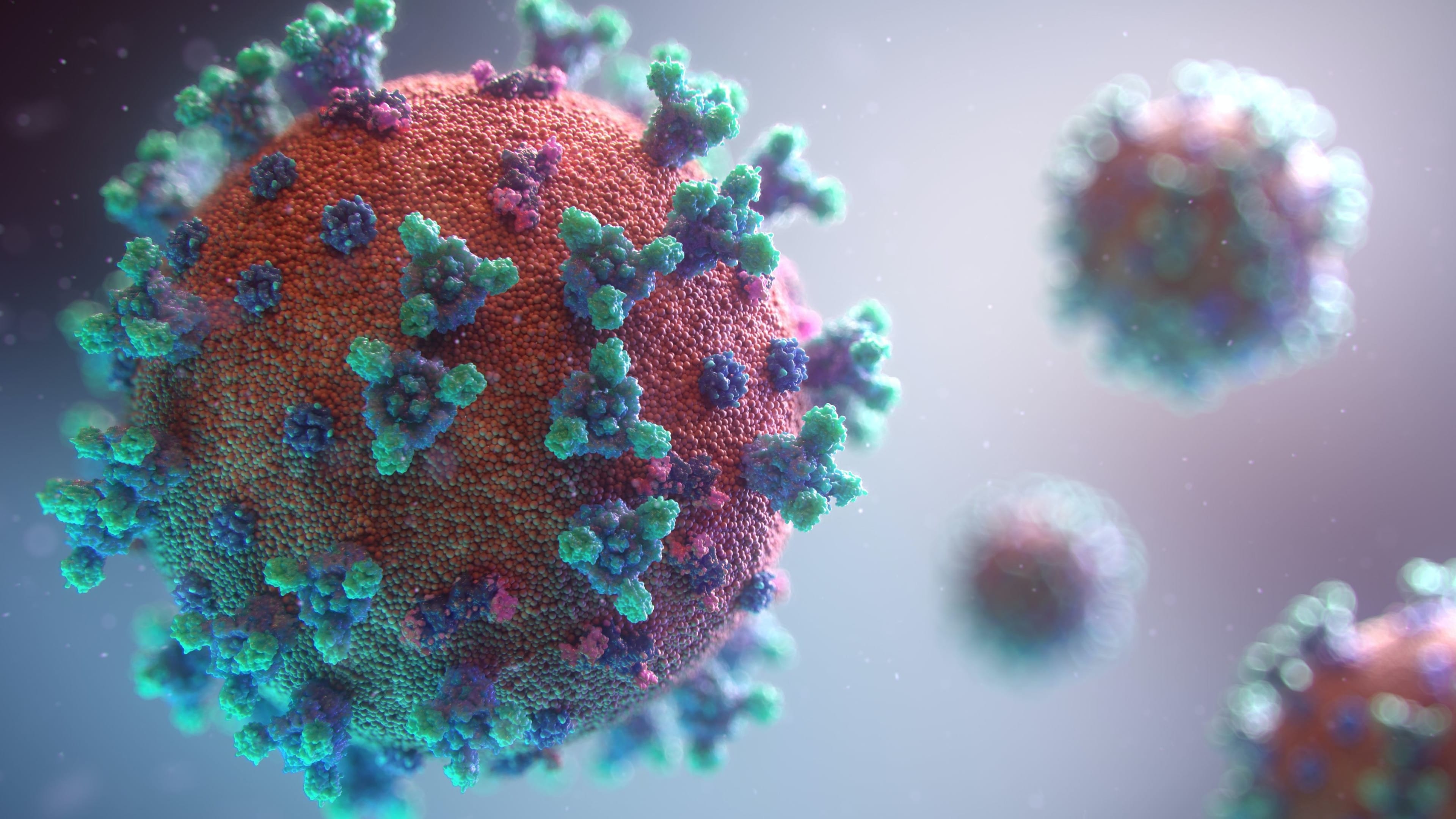COVID vaccines: how to speed up rollout in poorer countries

There is extreme inequity in access to COVID-19 vaccines – and the pandemic won’t end until it’s addressed. Image: REUTERS/Mohamed Abd El Ghany

Explore and monitor how COVID-19 is affecting economies, industries and global issues

Get involved with our crowdsourced digital platform to deliver impact at scale
Stay up to date:
COVID-19
- It is estimated that more than 1.5 billion doses of COVID-19 vaccines are produced every month.
- 11.3 billion doses are needed to vaccinate 80% of teenagers and adults.
- Low- and middle-income countries are barely present in COVID-19 vaccine supply chains, writes Sarah Schiffling, an expert in supply chain management.
- Diversifying vaccine production, addressing transport logistics and training healthcare workers are just some of the challenges to vaccinating those in poorer countries.
COVID-19 vaccine production has scaled up significantly. Global output is now estimated to be over 1.5 billion doses a month, rapidly propelling the world towards the 11.3 billion doses needed to vaccinate 80% of teenagers and adults and potentially bring the pandemic to an end. Total output may reach that target by the end of 2021.
Protecting the global population will soon no longer be hampered by limited supply. Yet despite production scaling up, for many low- and middle-income countries, access to vaccines continues to be a struggle. Poorer countries lag far behind richer ones in terms of COVID-19 vaccine coverage. Fewer than 3% of people in low-income countries are fully vaccinated.
As the world closes in on having the capacity to theoretically vaccinate everyone, more needs to be done to make sure doses end up being given to those that need them. Here’s what’s standing in the way.
Spreading out production
Part of the problem is that production is concentrated in relatively few countries. Pretty much everyone imports COVID-19 vaccines, but 80% of exports come from just ten countries, and low- and middle-income countries are barely present in COVID-19 vaccine supply chains. As a result, they don’t have ready access to supplies that they themselves are creating, while when trying to secure imports, they tend to be outcompeted by wealthier countries, who typically over-order.
One way vaccine producers are trying to resolve this problem is by diversifying who makes vaccines. AstraZeneca, for example, is working with Siam Bioscience in Thailand to produce vaccines in South-east Asia that are specifically for the region. Johnson & Johnson is working with Aspen PharmaCare in South Africa to increase supply to Africa.

Other countries are becoming producers too. Vietnamese manufacturers are going to make Russia’s Sputnik V vaccine. And Egypt has signed a deal that could see it produce a billion doses of the Sinovac vaccine each year, many of which would be used to supply Africa.
An added benefit of these agreements is that they produce vaccines closer to where they are needed. Stretched supply chains are causing issues around the globe, and medical supply chains have been under pressure throughout the pandemic. Shortening supply chains should hopefully leave low- and middle-income countries less exposed to shortages and pressures elsewhere in the world.
There have also been calls for a patent waiver for COVID-19 vaccines, to legally allow countries to produce doses of the existing vaccines without the involvement of the pharmaceutical companies that developed them. But calls for this so far haven’t been successful.
A vaccine patent waiver also wouldn’t solve access issues on its own. For low-income countries to produce their own doses, technology and knowledge would need to be passed over along with the legal production rights. Financial support would be needed too. At the time of writing, vaccine producers are yet to share freely the knowledge behind their products.
Supply doesn’t end at the border
Transport also needs to be addressed. The logistics of rolling out COVID-19 vaccines in low- and middle-income settings can be very challenging.
Roads to remote communities can be non-existent, dangerous or in a bad state of repair. In Indonesia, for example, authorities have found it hard to get doses to certain island communities. But these challenges can be overcome. In Bhutan, vaccines have got to hard-to-reach mountainous locations by air or on foot. Countries like Malawi and Vanuatu have tested delivering vaccines using drones. Good planning and ingenuity can boost delivery rates.
Meanwhile keeping COVID-19 vaccines at their required temperatures in transit and in warehouses is a particular concern. But this isn’t new. The Ebola vaccine also needs to be stored at ultra-low temperatures and has been successfully distributed to areas like the DRC’s conflict-affected north-eastern region. This experience of combating disease outbreaks should be beneficial in setting up the necessary logistics this time round.
Vaccination requires the human touch
Ultimately, people need to be willing to be vaccinated. They also need people and facilities to administer vaccines to them. There are, however, significant shortages of healthcare workers around the world, with low- and middle-income countries particularly badly affected.
Staff need to be specially trained to give COVID-19 vaccinations, which is why the World Health Organization offers online training for frontline staff in a wide range of languages. Local knowledge is also essential for setting up vaccination points that correspond to the needs of the population – there’s no point offering vaccines where people can’t or don’t want to have them.
Hesitancy is also a barrier in some places – for instance in the east African countries of Uganda and Tanzania. Consistent messaging is needed to overcome it, and authorities need to engage with the public on their specific concerns, which may be linked to religious or cultural factors or fears around safety. Lessons learned in one country are unlikely to be directly transferable to others, but can inform the development effective strategies.
How has the Forum navigated the global response to COVID-19?

There is extreme inequity in access to COVID-19 vaccines – and the pandemic won’t end until it’s addressed. Only 2.3% of people in low-income countries have received at least one dose. In the UK, that figure is close to 90%. There is a moral imperative to change this, and an economic one too. Global trade cannot properly recover until the virus is suppressed.
Ending the pandemic will mean making more doses available to lower-income countries. It will require getting better at delivering vaccines in difficult-to-reach parts of the world. And it will mean ensuring that people in lower-income countries want to get vaccinated. As vaccine production continues to ratchet up, it’s important to remember that all three of these points need to be addressed.
Don't miss any update on this topic
Create a free account and access your personalized content collection with our latest publications and analyses.
License and Republishing
World Economic Forum articles may be republished in accordance with the Creative Commons Attribution-NonCommercial-NoDerivatives 4.0 International Public License, and in accordance with our Terms of Use.
The views expressed in this article are those of the author alone and not the World Economic Forum.
Related topics:
The Agenda Weekly
A weekly update of the most important issues driving the global agenda
You can unsubscribe at any time using the link in our emails. For more details, review our privacy policy.
More on COVID-19See all
Charlotte Edmond
January 8, 2024
Charlotte Edmond
October 11, 2023
Douglas Broom
August 8, 2023
Simon Nicholas Williams
May 9, 2023
Philip Clarke, Jack Pollard and Mara Violato
April 17, 2023






